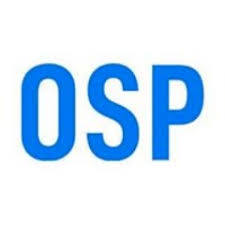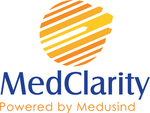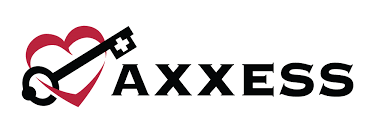Yes, Revenue Cycle Management Software may be accessible from various devices and platforms. The software is designed to work with a variety of operating systems, including Windows, Mac, and Linux, and may be accessed by desktop, laptop, tablet, or smartphone. This provides greater simplicity and flexibility in managing the revenue cycle process, allowing healthcare businesses to access and use the software from anywhere, at any time.
List of 20 Best Revenue Cycle Management Software
Telcor RCM solution for laboratory revenue cycle management and billing. This cutting-edge software offers unmatched capabilities to streamline processes, increase collections, and reduce expenses for labs. With its intuitive insights and advanced fe...Read More Telcor RCM
OspLabs is a healthcare software designed specifically for small and medium-sized enterprises and agencies. Offering comprehensive features and full compatibility with Windows, OspLabs provides all-in-one solutions for all your healthcare requirement...Read More OspLabs
Quadax is a leading revenue cycle management software tailored for the healthcare sector. Our extensive expertise of over 50 years enables us to offer personalized solutions that simplify payment procedures, boost efficiency, and elevate financial ou...Read More Quadax
PulseRCMis a solution for revenue cycle management. This software streamlines administrative and clinical tasks with its intuitive interface and customizable documentation, allowing healthcare practices to boost efficiency and maximize financial outc...Read More PulseRCM
athenaIDX is arevenue cycle management software that streamlines billing processes, boosts collections, and reduces administrative burdens for healthcare providers. This advanced solution allows for seamless financial operation management, enabling p...Read More athenaIDX
Currance is a software for healthcare systems looking to enhance their revenue cycle management. By leveraging expert knowledge and cutting-edge technology, Currance streamlines operations, reduces non-value-added tasks, and improves revenue. Partner...Read More Currance
RevSpring is an established financial communication and payment solution that enables organizations to engage with consumers for better results. With advanced data analytics, RevSpring tailors engagement workflows based on individual preferences and...Read More RevSpring
RevvPro is an advanced Revenue Cycle Management solution designed to simplify and enhance revenue management for healthcare providers. With its user-friendly mobile app and comprehensive desktop application, combined with HIPAA-compliant workflows an...Read More RevvPro
Allscripts is a leading EMR software known for its advanced features in discharge planning, documentation accuracy, and quality management. Its intuitive interface and seamless workflow have made it a preferred choice for many organizations, earning...Read More Allscripts
MedClaritysolution for healthcare practices looking to streamline their daily operations. Our robust practice management software simplifies scheduling, billing, and reporting processes, increasing productivity and profitability. With MedClarity, you...Read More MedClarity
Pearly is a dental RCM solution for any organization. Enhance your revenue operations with intelligent workflows that handle patient billing and A/R management seamlessly. With a track record of serving over 1,000 dental organizations, including 100+...Read More Pearly
Unlock the full potential of your healthcare organizations revenue cycle management with Waystar. As a top-rated cloud-based solution, Waystar offers a seamless and efficient way to handle financial processes, leading to increased operational efficie...Read More Waystar
PointClickCare is a nursing home solution that optimizes administrative tasks including billing, invoicing, staff scheduling, and management. Our software simplifies complex processes and tracks medications, freeing up your time to provide exceptiona...Read More PointClickCare
Axxess is a technology software for home health enterprises. Our cutting-edge solutions are designed to simplify operations and transform the way you do business. With a user-friendly interface and powerful features, Axxess empowers you to boost prod...Read More Axxess
Pipo Saude - the leading healthcare management software that caters to all your needs. Our innovative platform offers 24/7 teleconsultations and personalized care for your employees, promoting their overall well-being. With Pipo Saude, you can expect...Read More Pipo Saude
AGS AI Platform, a software designed to streamline revenue cycle management, enhance coding accuracy, and optimize financial efficiency for healthcare institutions. By leveraging AI technology, this platform allows providers to allocate more time to...Read More AGS AI Platform
Cerner Revenue Cycle Management – solution for healthcare institutions looking to streamline their financial processes. By integrating clinical and financial data, this comprehensive software improves billing accuracy, maximizes resource utili...Read More Cerner Revenue Cycle Management
Quanum RCM, an advanced revenue cycle management software designed to enhance billing procedures, boost financial performance, and improve overall patient satisfaction. With powerful features including claims management, payment processing, and detai...Read More Quanum RCM
iCareBilling is a Medical Billing Company in the US. This software provides a comprehensive suite of services, including Revenue Cycle Management, Practice Management, Insurance Credentialing, Provider Enrollment, and Web Design. Our expertise and in...Read More iCareBilling
OpenPM is a revenue cycle management tool designed to streamline billing, claims processing, and appointment scheduling. Its intuitive web interface ensures ease of use, while its seamless integration with EHR systems maximizes efficiency and cash fl...Read More OpenPM
Learn More About Revenue Cycle Management Software
- What Is Revenue Cycle Management Software?
- What Are The Recent Trends In Revenue Cycle Management Software?
- Benefits Of Using Revenue Cycle Management Software
- Important Factors To Consider While Purchasing Revenue Cycle Management Software?
- What Are The Key Features To Look For In Revenue Cycle Management Software?
- Why Do Businesses Need Revenue Cycle Management Software?
- How Much Time Is Required To Implement Revenue Cycle Management Software?
- What Is The Level Of Customization Available In Revenue Cycle Management Software?
- Which Industries Can Benefit The Most From Revenue Cycle Management Software?
- Conclusion
What Is Revenue Cycle Management Software?
Revenue Cycle Management (RCM) software is a sophisticated tool that simplifies and automates a healthcare organization's financial procedures. It manages the complicated and time-consuming responsibilities of billing, payment collection, and revenue tracking, freeing up healthcare practitioners to focus on providing great treatment to their patients.
This software interfaces with electronic health records (EHR), practice management systems, and financial accounting systems to provide a complete RCM solution. One of the most important features of RCM software is its ability to optimize cash flow through accurate and timely billing. The program streamlines the billing process from claim preparation to submission, reducing the possibility of errors and speeding up reimbursement.
It also features built-in claim scrubbing capabilities that detect and repair problems before submission, lowering the likelihood of claim rejection and payment delays. In addition to billing, RCM software provides a comprehensive set of financial management functions. It may monitor the organization's financial performance by providing statistics and analytics on key performance indicators (KPIs) such as total revenue, accounts receivable, and collection rates.
These insights assist healthcare providers in identifying areas for improvement and making informed decisions to maximize revenue. Another crucial element of RCM software is the capacity to manage patient accounts and collect payments. It provides a variety of payment methods, including online payments and secure electronic remittance advice (ERA), which simplifies the payment process for patients while lowering administrative labor for staff.
The software also includes patient eligibility verification capabilities, which help check insurance coverage and assess patient responsibility, resulting in accurate and timely invoicing. Furthermore, RCM software complies with healthcare rules such as HIPAA and uses industry-standard security protocols to protect sensitive patient information.
It also provides customized workflows to fit the distinct billing and payment processes of various specializations, making it an adaptable solution for healthcare organizations of all sizes. When selecting RCM software, it is critical to assess its features, integrations, reporting capabilities, and pricing to ensure it suits your organization's specific requirements and budget. With the appropriate RCM software, healthcare providers may streamline their revenue cycle, decrease administrative load, and ultimately improve financial performance.
What Are The Recent Trends In Revenue Cycle Management Software?
Recent revenue cycle management software advancements have been heavily influenced by healthcare businesses' growing demand for efficiency, accuracy, and data security. As the healthcare business evolves and becomes more complex, revenue cycle management software has adapted to suit providers' evolving needs and desires.
One key development in revenue cycle management software is the incorporation of artificial intelligence and automation. AI can analyze massive amounts of data and discover patterns, allowing for more efficient procedures and higher accuracy. Automation can help with operations like claim submission and payment processing, decreasing human workload and minimizing errors. Another trend is the migration to cloud-based technologies.
Cloud-based software provides convenient access to real-time data from any location, which is critical for effective revenue cycle management. Furthermore, it eliminates the need for costly hardware and provides for scalability as businesses expand. The importance of data security has also resulted in the inclusion of advanced security features in revenue cycle management software.
This includes features like data encryption, safe data storage, and user access control to protect critical patient and financial information from cyber attacks. Interoperability and connectivity are important developments in revenue cycle management software. With the increased usage of electronic health records, clinicians require software that integrates easily with other systems and exchanges data reliably and efficiently.
This provides a more comprehensive perspective of a patient's healthcare journey and enhances the whole revenue cycle management process. Furthermore, there is an increased emphasis on patient engagement and pleasure. Revenue cycle management software increasingly includes patient-friendly features such as online payment portals and automated communication systems, which can assist minimize the time and effort necessary for billing and payment processes.
Benefits Of Using Revenue Cycle Management Software
Revenue Cycle Management (RCM) software helps healthcare firms improve their financial procedures and increase revenue. This comprehensive program provides a one-stop solution for healthcare practitioners to manage patient billing, claims processing, payment collections, and other tasks. Investing in RCM software can help healthcare organizations save money and run more efficiently.
Here are some major advantages of adopting revenue cycle management software:
1. Improved Efficiency And Automation. One of the most significant advantages of RCM software is its ability to automate and streamline administrative tasks. This software can perform tedious and time-consuming operations like patient eligibility verification and claims processing, freeing up staff to focus on more important responsibilities. RCM software enables healthcare businesses to improve efficiency and productivity, resulting in cost savings.
2. Faster Claims Processing: RCM software allows healthcare providers to drastically cut the time it takes to process and submit insurance claims. Before submitting a claim, the software automatically checks for mistakes and missing information, identifying any difficulties. This reduces claim rejections and denials, leading in speedier reimbursements from insurance carriers.
3. Improved Revenue Collection: RCM software's ultimate purpose is to help healthcare firms collect more revenue. Healthcare providers can increase income by automating operations, lowering claim rejection rates, and tracking payments. The program also assists in identifying billing anomalies, ensuring that all services are billed correctly and on time, hence improving income.
4. Better Financial Management: RCM software provides healthcare organizations with real-time financial performance information. This enables better financial management and decision-making using accurate and up-to-date information. The program also offers insights into patient payment habits, allowing providers to modify their billing and collection techniques to increase cash flow.
5. Compliance With Regulations: Healthcare organizations must comply with a variety of regulations and procedures, including HIPAA and ICD-10 coding. RCM software ensures compliance with these rules, lowering the risk of noncompliance penalties and legal concerns. This gives healthcare practitioners peace of mind while also protecting their reputations.
6. Improved Patient Experience: Effective RCM software benefits both healthcare providers and patients. Patients can pay their bills and get billing information without having to visit the provider's office, thanks to features like online bill pay and self-service payment alternatives. This enhances the entire patient experience and happiness.
Important Factors To Consider While Purchasing Revenue Cycle Management Software?
When purchasing Revenue Cycle Management Software (RCM), several key criteria should be carefully considered. This software is a critical tool for managing a healthcare organization's finances, and selecting the correct RCM system can have a significant impact on the business's overall success and efficiency.
Here are some important considerations for buyers.
1. Functionality: The first and most important consideration is the functionality of the RCM software. It should include a powerful set of capabilities that can expedite and automate the various stages of the revenue cycle, such as patient registration, claims administration, and billing. Check for features including eligibility verification, claim scrubbing, payment processing, and analytics.
2. Integration: The RCM software's integration capabilities are also an important consideration. It should be able to work easily with other systems and applications in the organization, such as electronic health records and practice management solutions. This ensures a smooth flow of data and prevents duplication of effort.
3. Customization: Because each healthcare institution has different needs and workflows, the RCM software should be highly configurable. It should allow for easy configuration and customization of workflows, rules, and reports to meet the organization's specific requirements.
4. User-Friendly Interface: Any software's adoption and utilization are dependent on its user-friendliness. The RCM software should have a basic, intuitive interface that is easy to browse and takes little training to use efficiently. This saves time and reduces errors in data entering.
5. Data Security And Compliance: Given the growing potential of data breaches in healthcare, it is critical to ensure that the RCM software is HIPAA compliant and has strong data security safeguards in place. This will prevent unwanted access to critical patient information while also ensuring compliance with all regulatory regulations.
6. Customer Support And Training: As with any technology, there may be glitches or questions when utilizing RCM software. As a result, it is critical to select a vendor who provides outstanding customer support and training to ensure a seamless setup and continued usage of the program.
7. Scalability: As the healthcare company expands, so does the volume of data and revenue processes. It is critical to select a scalable RCM system that can handle increasing workloads while maintaining performance and functionality.
What Are The Key Features To Look For In Revenue Cycle Management Software?
Revenue Cycle Management (RCM) software is a useful tool for businesses to track and manage their financial processes, including patient registration, billing, claims processing, and collections. With so many options available, purchasers must grasp the key qualities that define effective RCM software.
Here are the main features to look for when choosing an RCM software for your business.
1. Billing And Coding Accuracy: One of the most important functions of RCM software is to ensure proper billing and coding. Look for software that includes coding and validation capabilities to eliminate errors and boost revenue.
2. Claims Management: A good RCM software should include a comprehensive claims management module that enables users to simply file, track, and manage claims. It should also be able to detect and correct claim inaccuracies in real time.
3. Revenue Cycle Analytics: The program should include full reporting and analytics features to help you better understand your revenue cycle. This will allow you to find areas for improvement and enhance revenue.
4. Integration With EHR/EMR: Healthcare companies should select RCM software that interacts easily with their Electronic Health Record (EHR) or Electronic Medical Record (EMR) system. This will help to streamline operations and increase efficiency.
5. Denial Management: Denials can lead to severe delays and financial loss for enterprises. Look for RCM software that includes a powerful denial management tool to help you detect and address denials fast.
6. HIPAA Compliance: The healthcare business places a high value on patient data privacy. Make sure the RCM software you chose is HIPAA-compliant and has sufficient security mechanisms in place to protect sensitive data.
7. Scalability: As your firm expands, your RCM requirements will change. Choose software that is scalable to meet your future requirements and can expand with your company.
8. User-Friendly Interface: An easy-to-use interface is required for software to function properly. To ensure a good user experience, choose software with a clean and intuitive interface that allows for quick navigation.
9. Training And Support: It is critical to select RCM software that offers comprehensive training and continuing support to assist users understand and maximize the platform's capabilities.
10. Customisation Options: Each firm is unique, with its own set of requirements and processes. Look for RCM software that may be customized to meet your individual needs.
Why Do Businesses Need Revenue Cycle Management Software?
Revenue cycle management (RCM) software is a critical tool for businesses of all sizes and across sectors. It streamlines the revenue cycle process, from patient or customer registration to final payment collection, allowing enterprises to maximize earnings while remaining compliant with regulatory standards. The revenue cycle describes a patient or customer's path from the first appointment or purchase to the final payment.
It consists of several phases, including patient intake, insurance verification, appointment scheduling, claim submission, and payment processing. Businesses risk experiencing delays, errors, and revenue loss if this complicated process is not properly managed and monitored. RCM software acts as a consolidated platform for managing and automating all stages of the revenue cycle.
It removes the need for manual data entry, streamlines workflows, and lowers the likelihood of human error. This results in enhanced efficiency and production, as well as speedier payment for services or products delivered. Furthermore, RCM software enables real-time visibility into a company's financial performance. It creates detailed data and analytics, helping organizations to spot possible problems and address them quickly.
It also assists in tracking key performance indicators (KPIs) such as denial rates, days in accounts receivable, and collections to enable effective revenue management. RCM software is vital for healthcare firms to keep compliant with ever-changing rules and billing guidelines. It automates and streamlines the coding and billing processes, reducing the risk of noncompliance and potential penalties.
How Much Time Is Required To Implement Revenue Cycle Management Software?
When deploying new software, one of the most prevalent worries for firms is the time required to be up and operating. The time it takes to establish revenue cycle management software varies based on a number of factors. These include your organization's size, the complexity of your revenue operations, and the extent of customisation required to meet your individual requirements.
The usual deployment time for revenue cycle management software is between a few weeks and a few months. The process usually consists of multiple steps, including planning, data mapping and integration, system configuration, testing, and training. The planning stage is critical because it lays the groundwork for a successful implementation.
During this step, the software vendor will collaborate with your team to define your company objectives, evaluate your present processes, and identify potential obstacles. This stage could take a few weeks to complete, depending on the availability of key stakeholders and the size of your company. After the planning is completed, the data mapping and integration stage begins.
This entails translating your current data and procedures to the new software. It is a necessary step for a seamless transition and correct data movement. The length of time for this stage is determined by the complexity of your data and the level of integration necessary. The system configuration stage involves configuring the software to fit your individual requirements. This could include tailoring procedures, forms, and reporting.
Depending on the intricacy of your revenue operations, this stage could take several weeks to complete. After the system has been configured, it is thoroughly tested to ensure that all features work properly and that any difficulties have been resolved. The length of time required for testing will be determined by your organization's size and the complexity of your revenue cycle. Finally, your team will need to receive training on how to use the new program properly. The length of training is determined by your organization's size and the amount of training required.
What Is The Level Of Customization Available In Revenue Cycle Management Software?
Revenue Cycle Management Software (RCM) is a critical tool for healthcare firms looking to optimize their financial operations and improve operational efficiency. As a buyer, you should understand the extent of customization possible in RCM software to ensure that it suits your specific business requirements. Most RCM software provides a high level of customization, allowing customers to adjust it to their own workflows and needs.
This is accomplished via a combination of adjustable features and add-on modules. Configurable Features: Configurable features are a crucial approach to personalize RCM software. These capabilities can be customized to meet your specific revenue cycle management requirements, such as billing rules, claim submission, and payment methods. This level of flexibility enables businesses to improve their revenue cycle while reducing human labor.
Add-On Modules: RCM software frequently includes add-on modules that enable more customization choices. These modules may feature enhanced reporting and analytics, patient communication capabilities, and connections with electronic health record (EHR) systems. Organizations can fully customize the program to their own needs and improve overall functionality by picking the appropriate modules.
Vendor Support: While RCM software allows for a great amount of customization, it still requires proper configuration and setup. This process can be complex, but respectable vendors offer specialized support and training to assist buyers in efficiently customizing and utilizing the software to its maximum potential.
Which Industries Can Benefit The Most From Revenue Cycle Management Software?
Healthcare industries, including hospitals, clinics, and private practices, are among the leading consumers of revenue cycle management software. This is because these organizations frequently deal with complex medical billing and coding processes, making it difficult to efficiently manage and analyze income. Insurance businesses and other healthcare payers might also benefit from using revenue cycle management software.
This program streamlines claims processing, improves accuracy, and reduces denials, resulting in speedier and more efficient reimbursement processes. Revenue cycle management software can also benefit retailers with several locations and a high volume of transactions. This software integrates with point-of-sale systems, enabling real-time financial tracking and reporting, inventory management, and billing automation.
It can also assist merchants discover and repair any revenue leakage, hence improving cash flow. Companies in the service industry, such as consulting firms and IT service providers, might benefit from revenue cycle management software. These firms frequently bill clients for services provided, necessitating a faster invoicing and payment procedure.
Businesses can use revenue cycle management software to automate invoicing, track payments, and generate reports, ensuring that billing is timely and accurate. Manufacturing, telecommunications, and energy and utility sectors are all potential beneficiaries of revenue cycle management software. These firms deal with complicated and different invoicing processes, thus a good revenue management and tracking system is necessary.
Conclusion
To summarize, selecting the appropriate Revenue Cycle Management (RCM) software for your firm is a critical decision that can have a substantial impact on revenue, efficiency, and overall financial health. Before making a purchase, conduct extensive research and examine your organization's specific requirements, budget, and goals.
As you compare RCM software choices, make sure to emphasize features and functionalities that meet your specific needs, including as claims administration, patient billing, reporting and analytics, and integration capabilities. Consider ease of use, customization possibilities, and customer support. Additionally, consider the software's pricing strategy and any potential hidden fees to verify it falls inside your budget.
Negotiate prices and request a demo to see the software in action. In addition, assess the software provider's reputation and track record. Look for reviews, case studies, and client testimonials to learn about their performance and satisfaction. Finally, make sure to include important stakeholders and department heads in the decision-making process to ensure a well-rounded perspective and that the software fulfills the demands of all departments.
By following these suggestions and carefully considering your organization's demands, you may find the best RCM software for your needs, paving the way for better revenue and financial management. Remember to check and analyze your choice on a regular basis to ensure that it meets your changing needs and goals.
Revenue Cycle Management Software FAQ's
Can Revenue Cycle Management Software Be Accessed Across Multiple Devices And Platforms?
Is Revenue Cycle Management Software Future-Proof And Adaptable To Emerging Technologies Like AI, Blockchain Or IoT?
Yes, Revenue Cycle Management Software is future-proof and compatible with emerging technologies such as AI, blockchain, and IoT. As technology advances, RCM software is meant to be adaptable and compatible with new technologies.
RCM software, with capabilities like as automated data processing, predictive analytics, and real-time data tracking, may seamlessly integrate AI, blockchain, and IoT to expedite processes and improve productivity. This helps your healthcare company remain competitive and compliant in a continuously evolving technological landscape.
Is There A Free Trial Offered To Assess Revenue Cycle Management Software Before Committing?
Yes, many revenue cycle management software suppliers provide a free trial to evaluate the program before making a purchase. This allows potential users to test out the software's features and functionalities to see if it satisfies their requirements. Free trials are normally available for a short duration, ranging from a few days to several weeks. It is recommended that you use a free trial to confirm that the software is a good fit for your company before making a financial commitment.
Does Revenue Cycle Management Software Offer Data Security Features And Meet Regulatory Compliance Standards?
Yes, most revenue cycle management software includes data security safeguards and meets regulatory criteria to protect sensitive patient information. These features often include safe data storage, access controls, encryption, and scheduled audits.
This enables healthcare firms to meet HIPAA requirements and other industry-specific compliance norms. Additionally, the program frequently delivers regular updates to keep up with any changes in regulatory standards. This guarantees that patient data is secure and that the overall revenue cycle management process adheres to industry laws.
Can Revenue Cycle Management Software Integrate Seamlessly With Existing Tools And Platforms?
Yes, most current revenue cycle management software is intended to work easily with existing tools and platforms. This enables a seamless transition and data flow between diverse systems, including electronic health records, billing systems, and accounting software. With configurable integration options, healthcare organizations may tailor the program to their specific needs and preferences, resulting in a more effective and simplified revenue cycle management process.






















